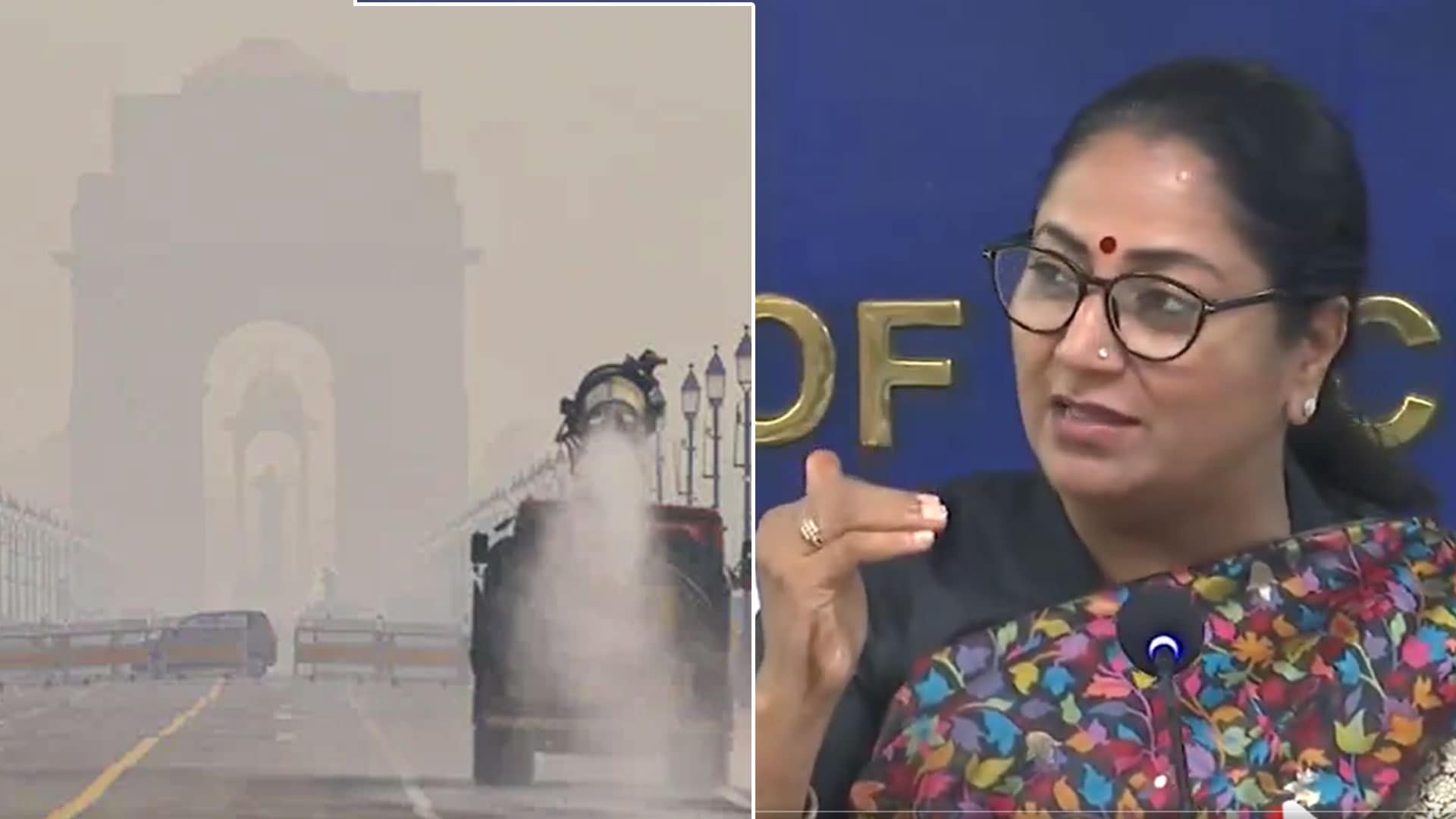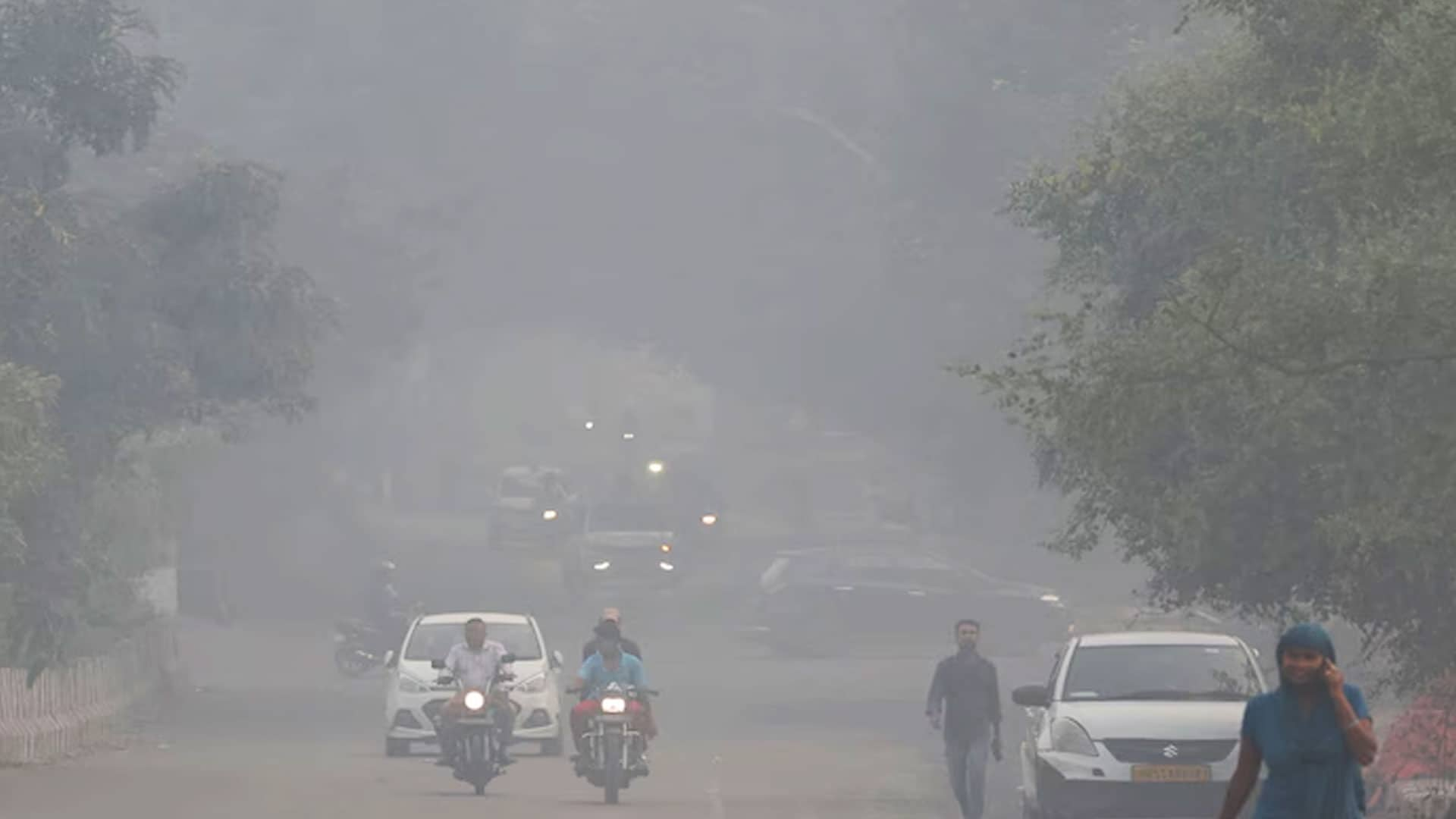- Home/
- Pollution Levels In Delhi Nearly 100 Times Higher Than WHO Limits
Pollution Levels In Delhi Nearly 100 Times Higher Than WHO Limits

Delhi's air quality plummeted to the 'severe plus' category again, making the national capital the most polluted city in the country today. The real-time Air Quality Index (AQI) is over 500 in different parts of the capital. At noon, the highest level was recorded at the Wazirpur monitoring station in Delhi, reporting an AQI level of 859.
The PM2.5 concentration level in Delhi is currently 96.2 times the World Health Organization's (WHO) air quality guidelines value.
PM2.5 or Particulate Matter 2.5 are fine, inhalable particles with diameters generally 2.5 micrometres or smaller. Meanwhile, PM10 or Particulate Matter 10 have a diameter of 10 microns or smaller and are found in significant proportions. PM2.5 pollutants are so small that they can enter the bloodstream causing adverse health impacts.
The PM2.5 level was reported at 481 micrograms/cubic metres. While PM10 was the main pollutant in Delhi and its neighbouring cities.
All air quality monitoring stations across Delhi reported a PM2.5 level of over 450 µg/m³.
Farm Fires And Other Factors
According to data from IQAir, an online air quality monitoring platform, the AQI level doubled on November 2 in just a day, reaching 483 from 256. While most of October saw AQI levels hovering between 150 and 200, from October 28, the AQI crossed the 200 mark and has spiked since then.
Stubble burning in Punjab and Haryana is one of the factors responsible for the pollution apart from Delhi-NCR's own vehicular and industrial pollution.
Correlating the spike in AQI and Punjab farm fires, from October 25 and 29, NASA's Worldview satellite recorded the stubble-burning incidents.
The crop-burning incidents increased significantly on October 26, rising even the next day, but saw a sharp decline on October 28 and increased exponentially on October 29.
Significantly, despite the rising trend this season, there has been a 57 per cent decline in farm fires between September 15 to October 29 from last year.
The Centre implemented the stage 3 measures to curb air pollution. Banning construction work in areas recording AQI over 400.
Vehicular emission and low wind speed are other factors that compound the misery. According to IQAir, the current wind speed in Delhi at 1:30 pm was reported at 7.4 km/hr. High wind speed helps disperse the pollutants.
Health Impact
The AQI hovered over 500 for the fourth consecutive day. Experts, for several years, have warned that extremely hazardous level of pollution has severe health impacts on all age groups and even on foetuses.
To put into perspective the health impact, the quality of the air people are inhaling is equivalent to smoking 25-30 cigarettes.
"From head to toe, there's no organ in the body that escapes the ill effects of air pollution. There is evidence to say that it causes obesity and asthma," senior lung specialist at Medanta Hospital, Dr Arvind Kumar said.
According to the European Environment Agency (EEA), both short and long-term exposure to air pollution can lead to a wide range of diseases, including stroke, chronic obstructive pulmonary disease, trachea, bronchus and lung cancers, aggravated asthma and lower respiratory infections.
Latest Stories
- Press Trust of India | Thursday October 23, 2025
Pollution level in Mumbai has spiked sharply, making October the most polluted month of the year so far, according to an analysis done by an independent research organisation.
- Press Trust of India | Thursday October 23, 2025
Delhi's air quality showed a slight improvement on Thursday but remained in the "very poor" category for the fourth consecutive day, aided by stronger surface winds that helped disperse pollutants.
- Written by Manya Singh | Thursday October 23, 2025
For healthy adults, a sore or scratchy throat after a heavy air-pollution day is usually temporary and improves in days with reduced exposure and simple self-care. Here are some easy hacks.
- Written by Shreya Goswami | Thursday October 23, 2025
An air purifier removes airborne contaminants, while a humidifier restores moisture. Understanding their distinct roles, and when to use one, both or none, can help you breathe easier and stay healthier through the season.
- Asian News International | Thursday October 23, 2025 , New Delhi
The Air Quality Index (AQI) in Delhi and its National Capital Region on Thursday morning remained under the "very poor" category with the Graded Response Action Plan (GRAP) II norms already in place.
................................ Advertisement ................................
Latest Videos
Opinion
Opinion | Why Indians Have Just Given Up On Air Pollution CrisisTanushree Ganguly
Friday December 20, 2024While some may argue that people in Delhi are now more aware of air pollution than they were a decade back, my rebuttal would be that awareness does not mean that people are concerned.
Opinion | You Must Outrage Over Filthy Air More Than Once A YearJyoti Pande Lavakare
Tuesday December 10, 2024Delhi welcomed us with monsoon rains and mangos. We were home. Fast forward a couple of years, in the winter of 2012, I found myself in denial about something other parents, mostly expats, were calling toxic air.
Opinion | Delhi's Air Pollution Situation Is Like A Bad MarriageNishtha Gautam
Friday November 22, 2024On a good day, such as today, the AQI reading in Delhi is 407. We are jubilant at the sickly sunshine trickling through the slightly dissipated smog. At least its not 1600.
दिवाली... पराली... सियासी जुगाली!Ashwini kumar
Monday November 18, 2024दिल्ली-एनसीआर में प्रदूषण का समाधान तो आज तक मिला नहीं. हर साल चिंतित होकर हम-आप सांसों की तकलीफ के साथ-साथ दिल और ब्लड प्रेशर के मरीज भी क्यों बनें?
घर में कैद बुजुर्ग और हांफते लोग, दिल्ली की सांसों में घुला ये कैसा रोग?Nidhi Kulpati
Friday November 08, 2024हमारी हवा जहरीली हो रही है. गुरुवार की शाम को जब मैं इस मुद्दे पर लिखने बैठी तो AQI लगातार 400 पार जाकर दम घोंट रहा था. बहुत लोगों को यह मामला बोरिंग लगे, लेकिन जब आप अपने साथ काम करने वालों को खांसते-हांफते देखते-सुनते हैं, तो चिंता होने लगती है. सुबह उठते ही दरवाजे खिड़कियां खोलने के लिए डॉक्टर मना कर रहे हैं. बड़े बुजुर्गों के लिए तो मॉर्निंग वॉक बाहर की दुनिया से सीधे संपर्क का ज़रिया है, लेकिन डॉक्टर इसकी भी मनाही कर रहे हैं.


















